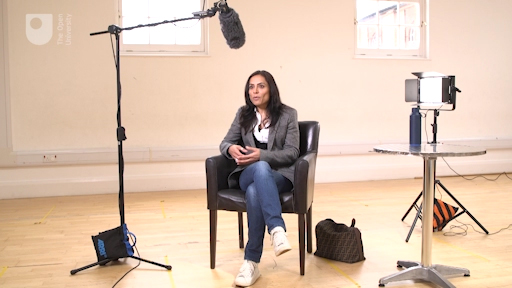3 Target markets and target audiences
If you research ‘target markets’ and ‘target audiences’ online or in print, you’ll often find conflicting definitions. In the creative arts world, this can be made even more complicated because ‘audience’ can also mean ‘physical audiences’ such as those for arts events. For the purposes of this course, the key terms will be defined as follows:
Target market – the organisation or individual who buys your service or product. For example, this could be the theatre, gallery or music venue that hires you, gives you space or agrees to display your work. In this situation, the organisation you are selling to is basing their interest in your offer on their estimation of audience demand.
Target audience – the ultimate consumers of your service or product. To use the same service provision example, the target audience in this case will be the public who attend your event.

There will be some freelancers for whom the market and audience are the same, for example if you are an artisan selling your products to individuals. For others, you will need to attract your target market (the initial buyers) by creating a product or service that is attractive to your target audience (the end users). It will be useful to make that distinction when planning who to target and how to attract their attention.
In Activity 1 you considered who might benefit from your product or service (the ‘potential audience’). In the next activity you’ll start to narrow down your target market. Remember, these are the people or organisations who will buy your service or product.
Activity 3 The XYZ formula
‘XYZ’ is a technique sometimes used by business coaches to help you to focus your idea into a short sentence – trying to get to the heart of what you are aiming to do and for whom. This can be a useful tool when considering your target market (and later on when thinking about your elevator pitch, which you’ll learn more about in Week 5).
Take a few minutes to complete this sentence for your creative business:
I do ‘X’ for ‘Y’ in order to ‘Z’.
For example:
‘I make jewellery (X) for brides (Y) in order to complete their wedding outfit and make them feel special (Z).’
‘I run events (X) for small town arts centres (Y) in order to engage the local community and help them to realise how art can enhance personal wellbeing (Z).’
Focus on your product, service or idea, i.e. the problems it solves, the benefits it offers or the impact it has, and consider who will benefit from it.
Also consider whether your market is made up of individuals or businesses and organisations.
Make notes in the box below.
Discussion
In the first example given, the target market is brides or possibly their family or friends. The next step is to work out how to attract those brides and motivate them to buy from you rather than your competitors.
In the second example, your target market is the arts centres. In order to motivate them to pay for your services, you will need to ensure that the events you propose are attractive to the target audience (the local community).
By now you should have a broad idea of the market you want to target with your product, service or idea. This analysis is likely to need further work, but this activity will have helped you to make a start if you haven’t yet considered it.
In this short clip, Zakia explains her approach to targeting the right niche market for her work as a graphic artist.

Transcript: Video 3
The more you can understand about the needs of your audience, the better you will be at targeting them, and you’ll start to look at that in more detail in the next section.
